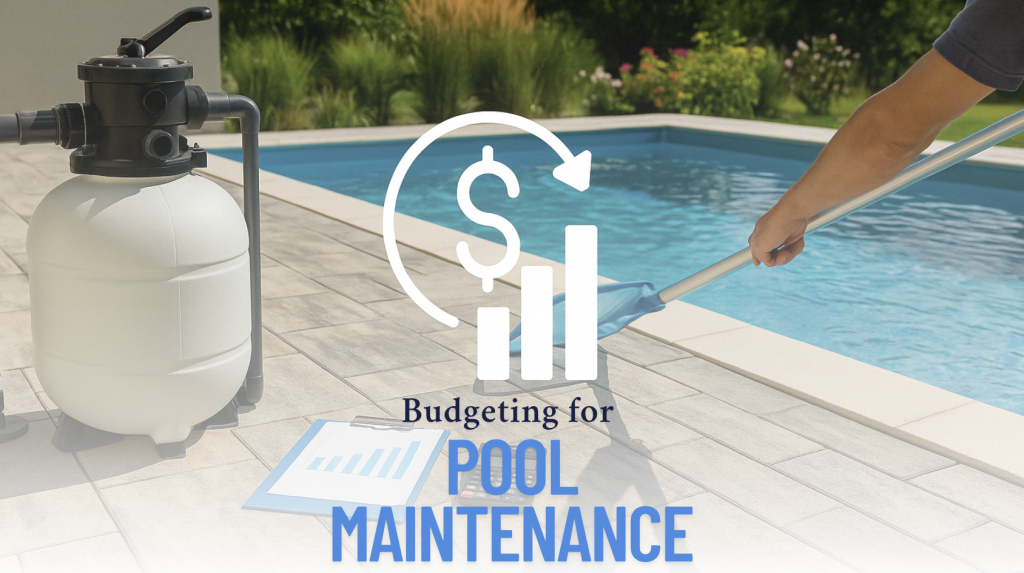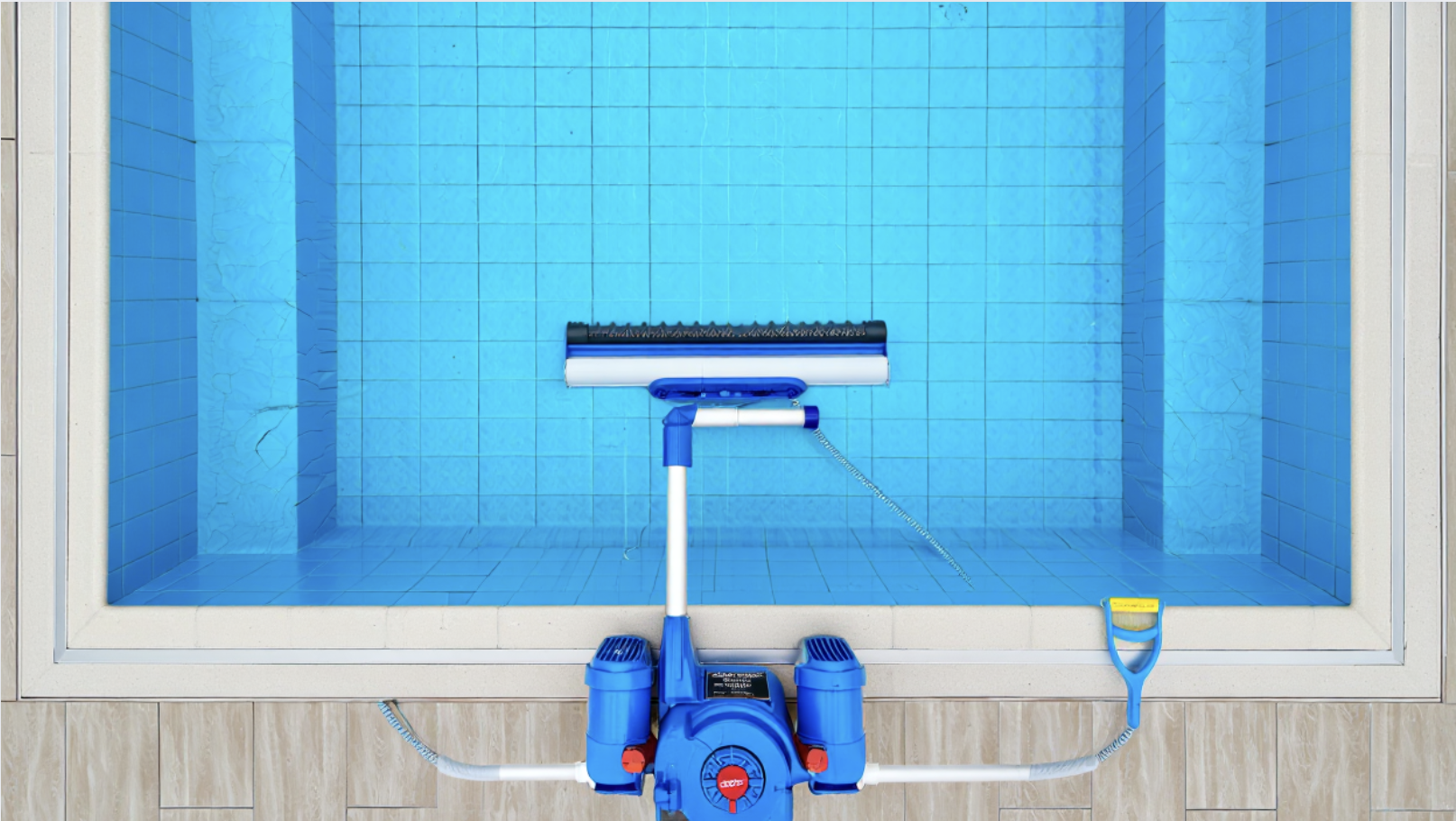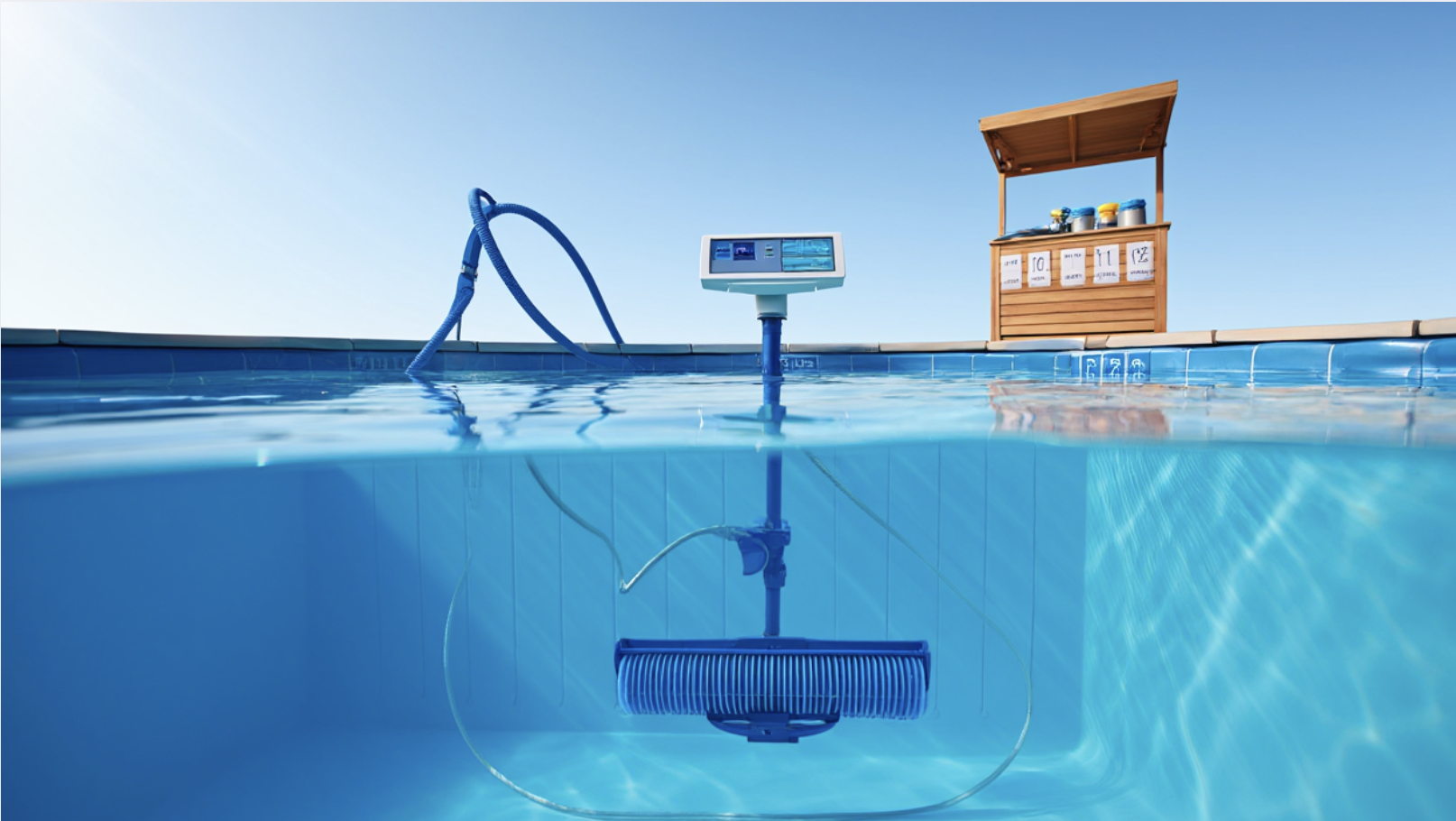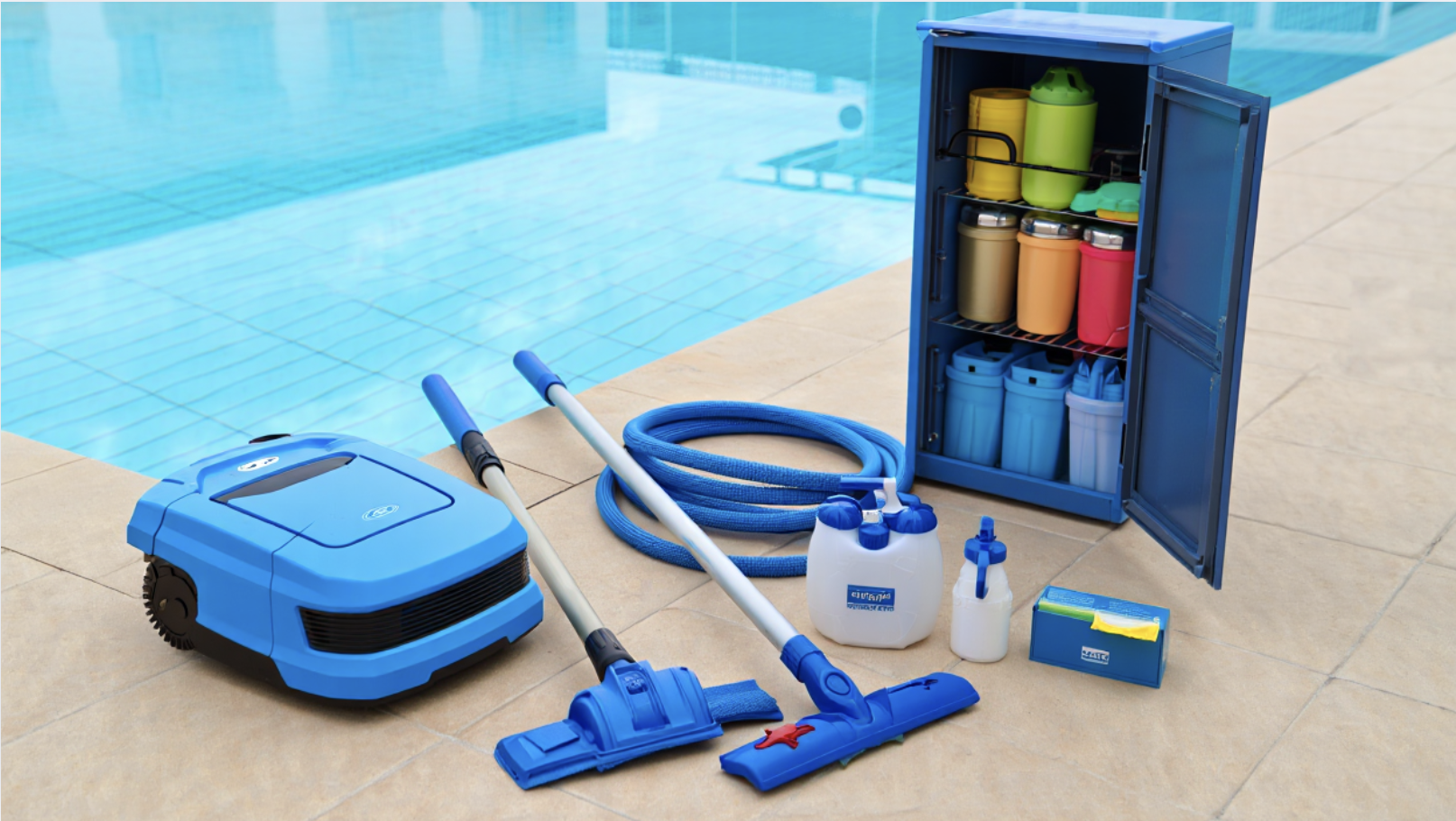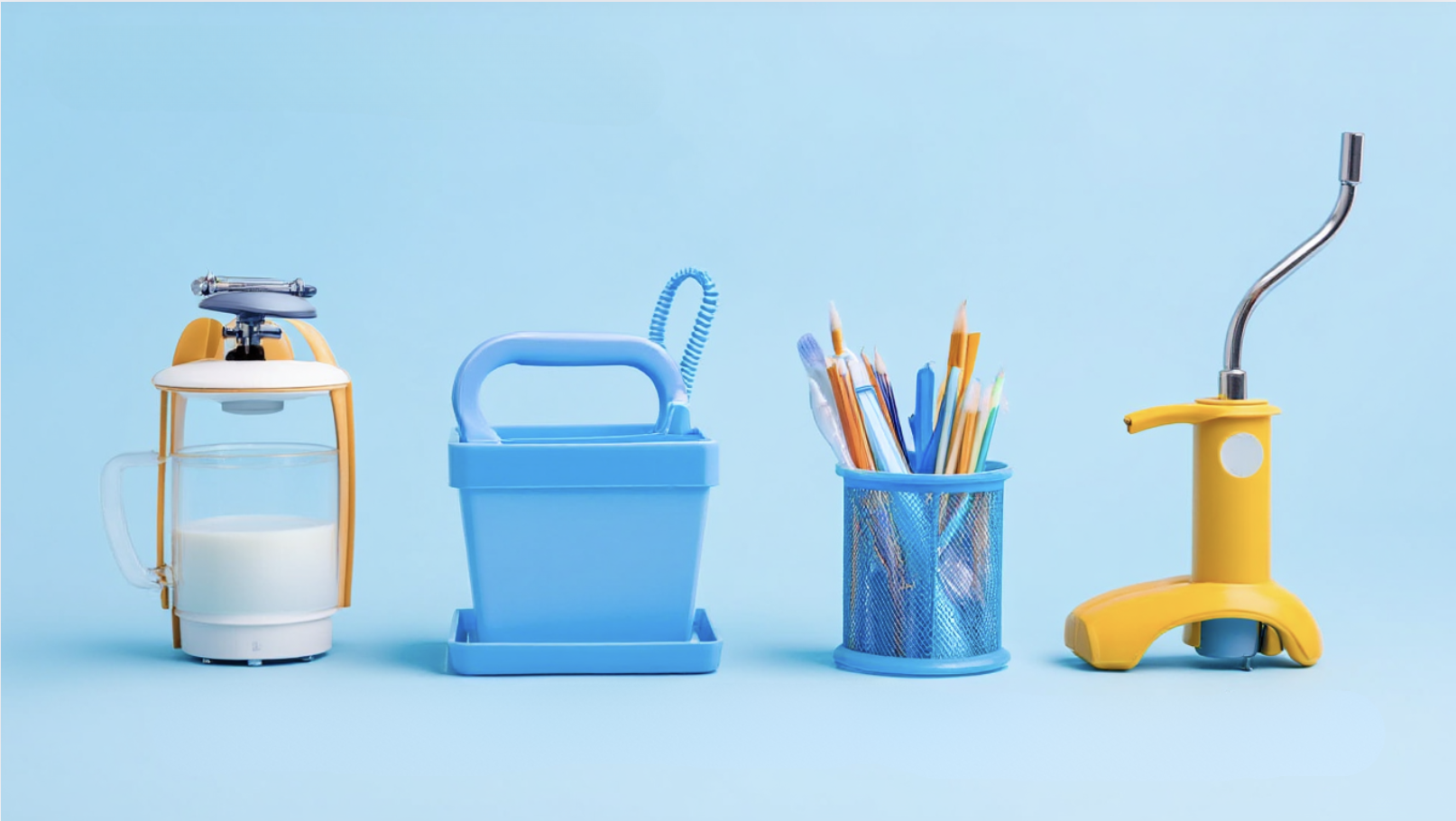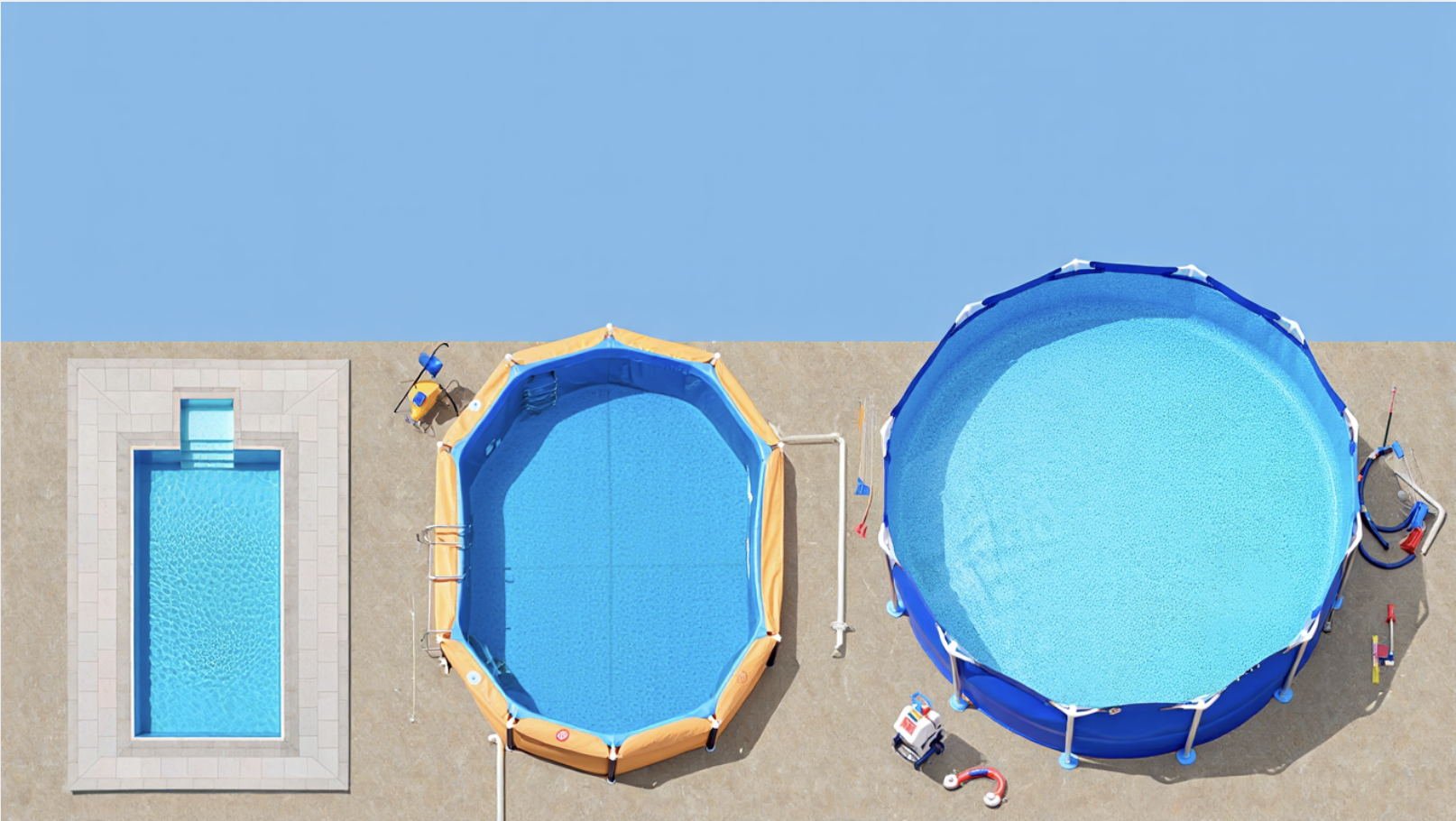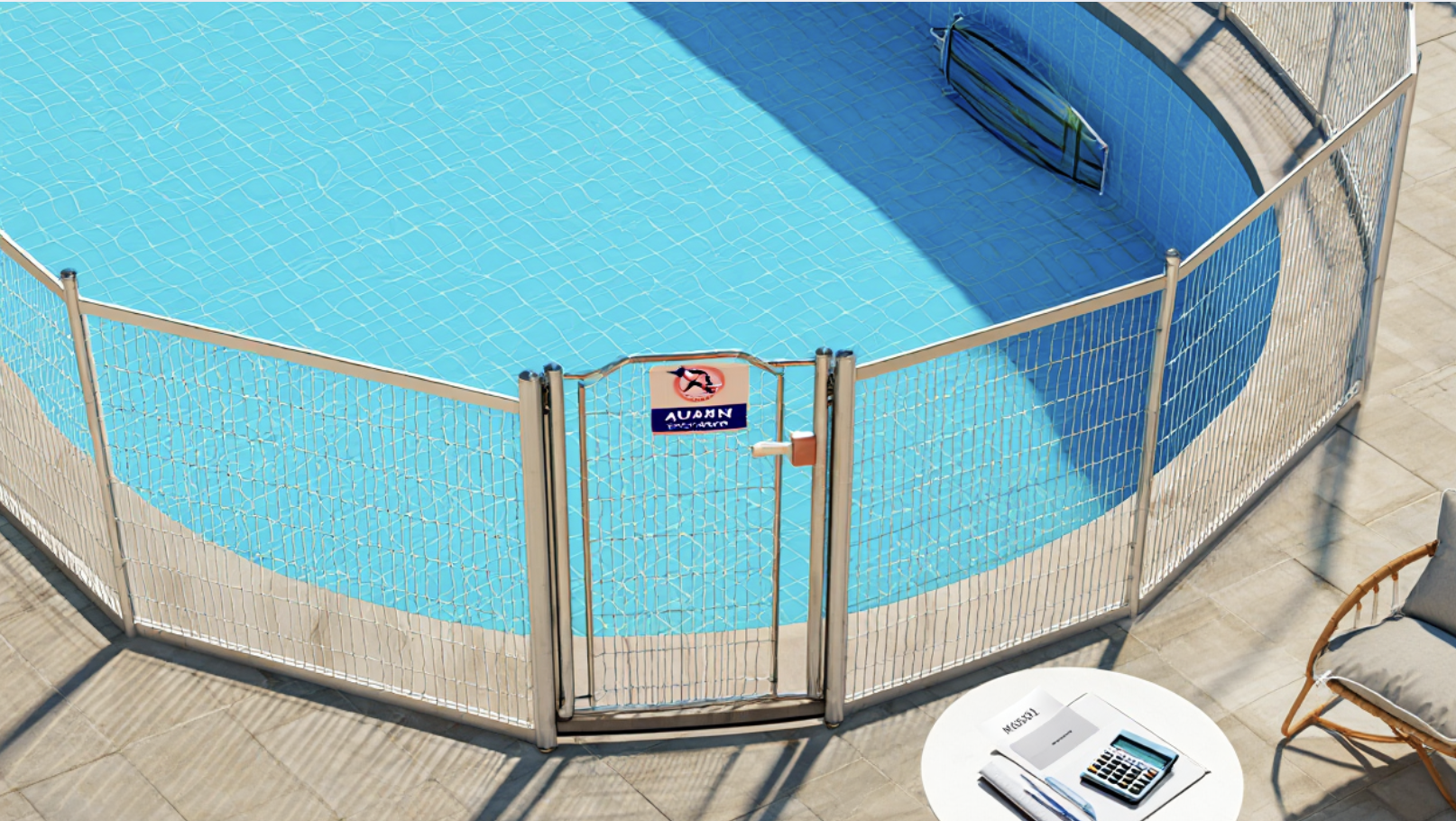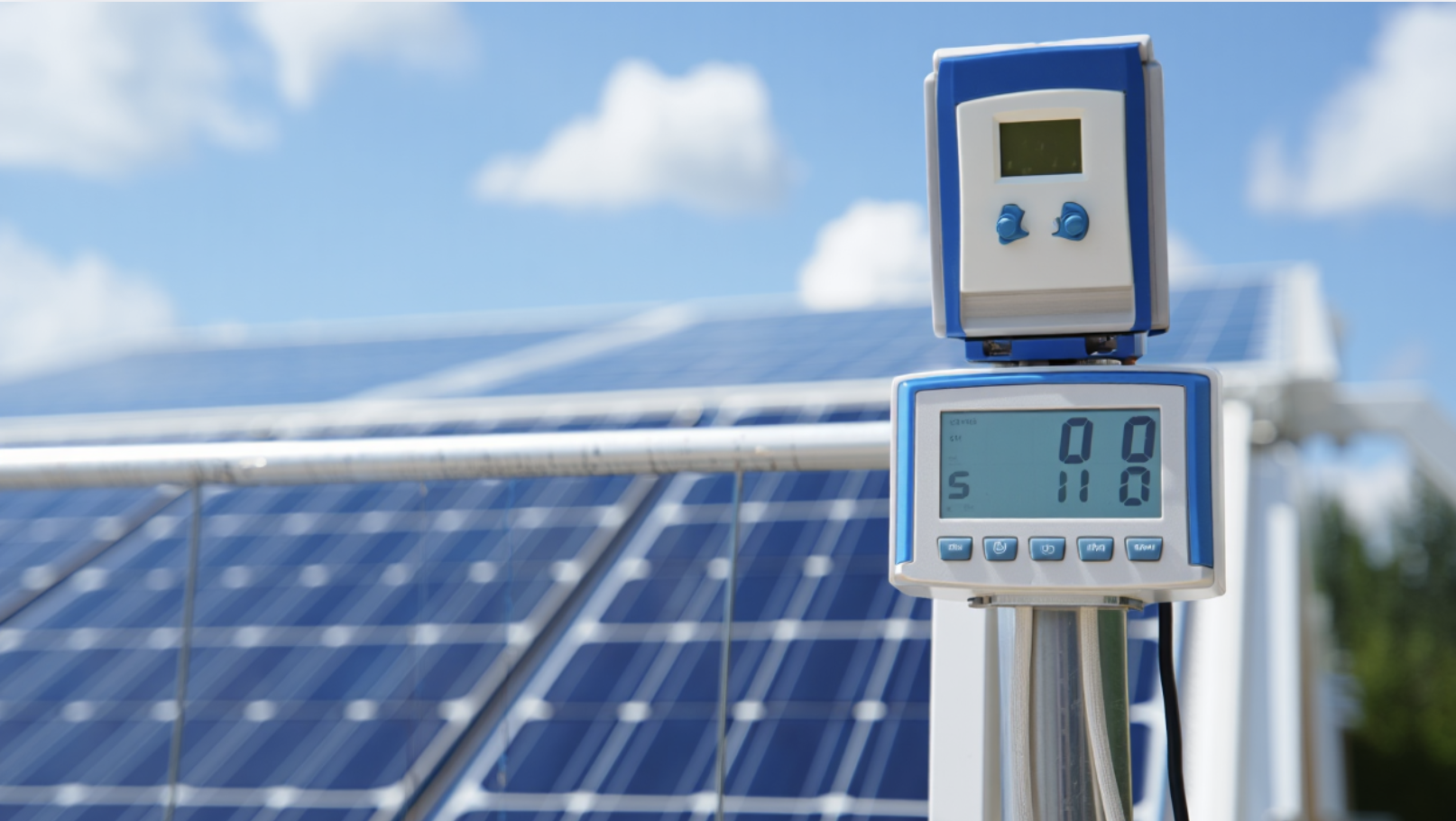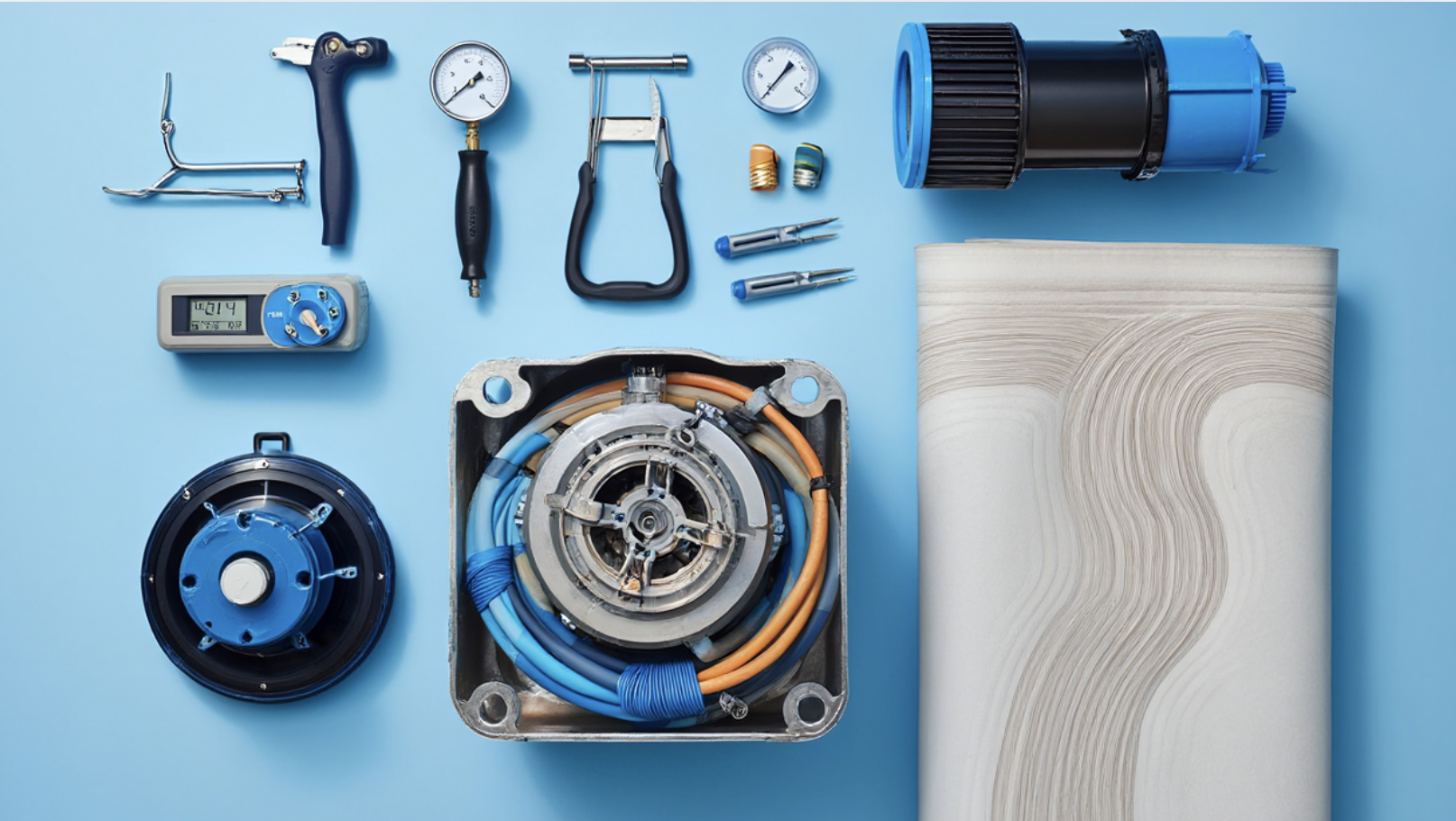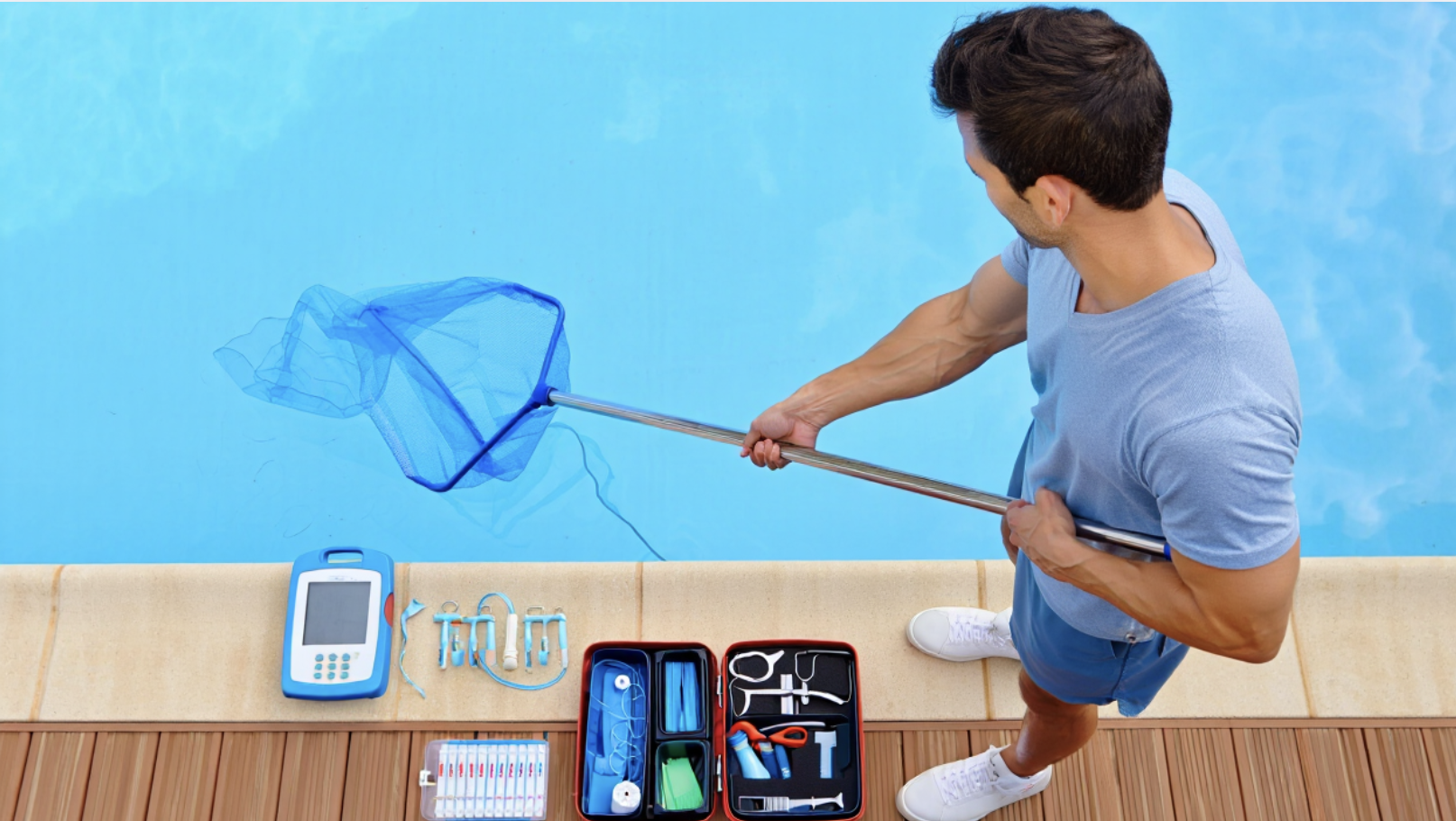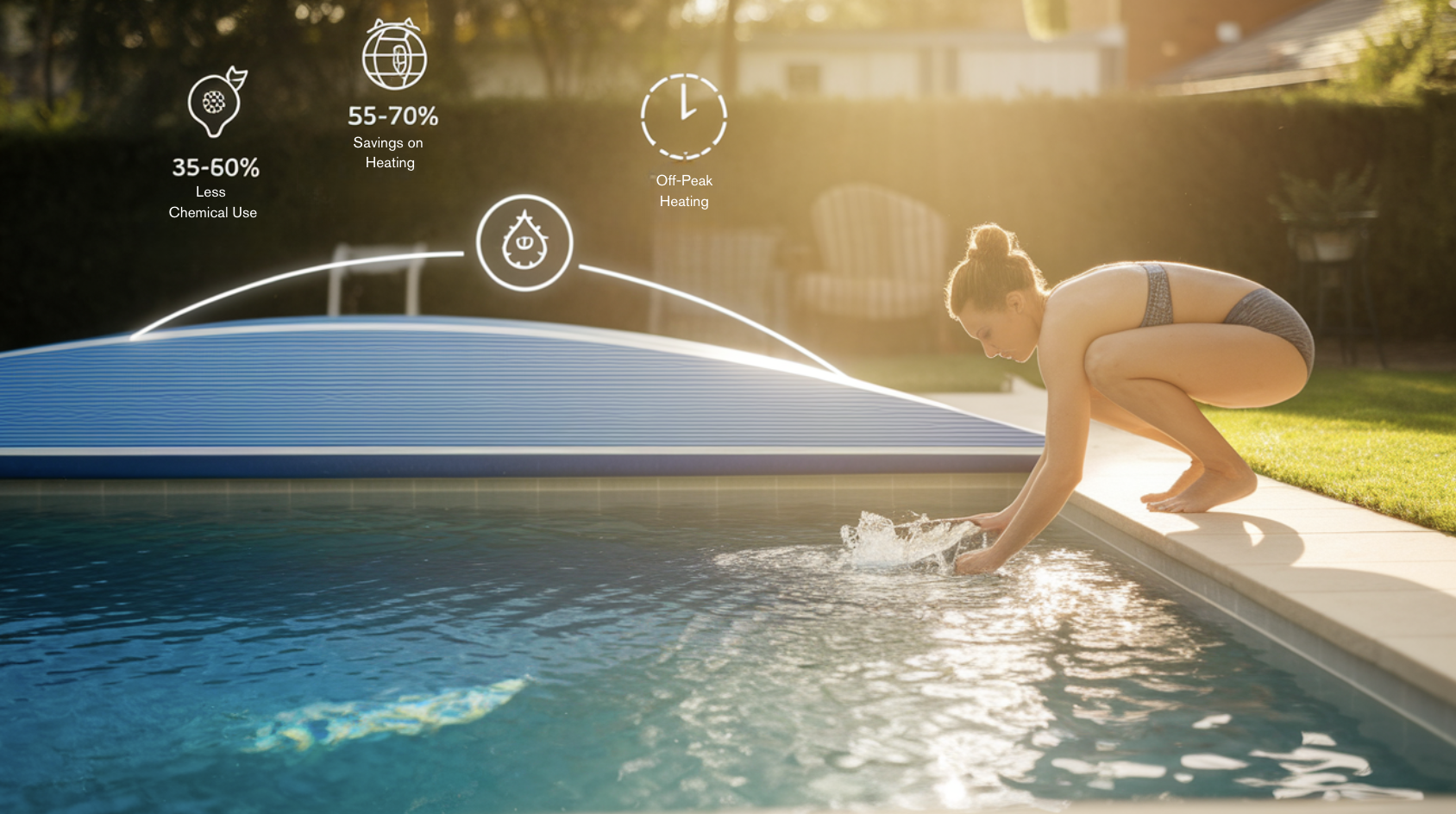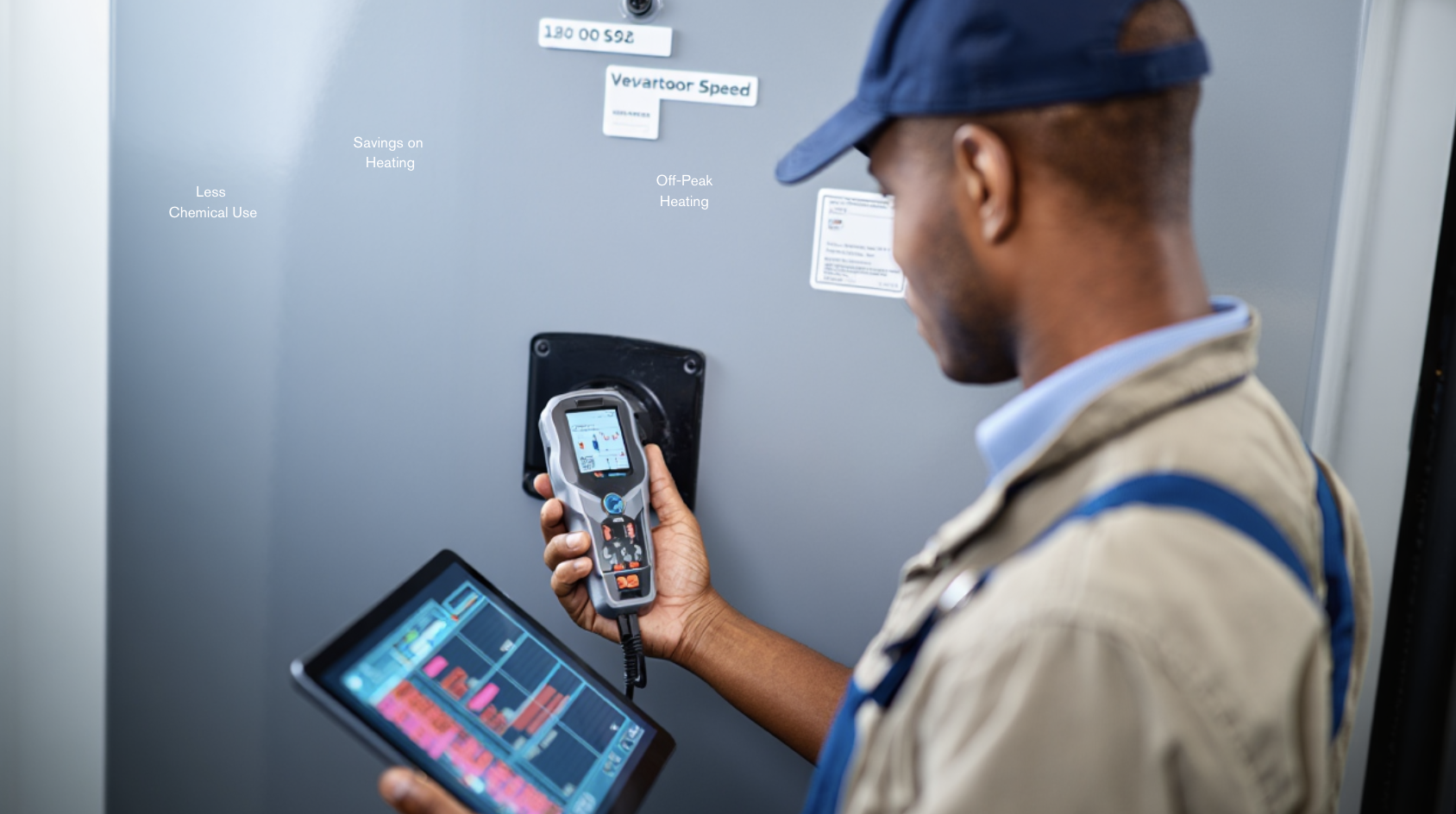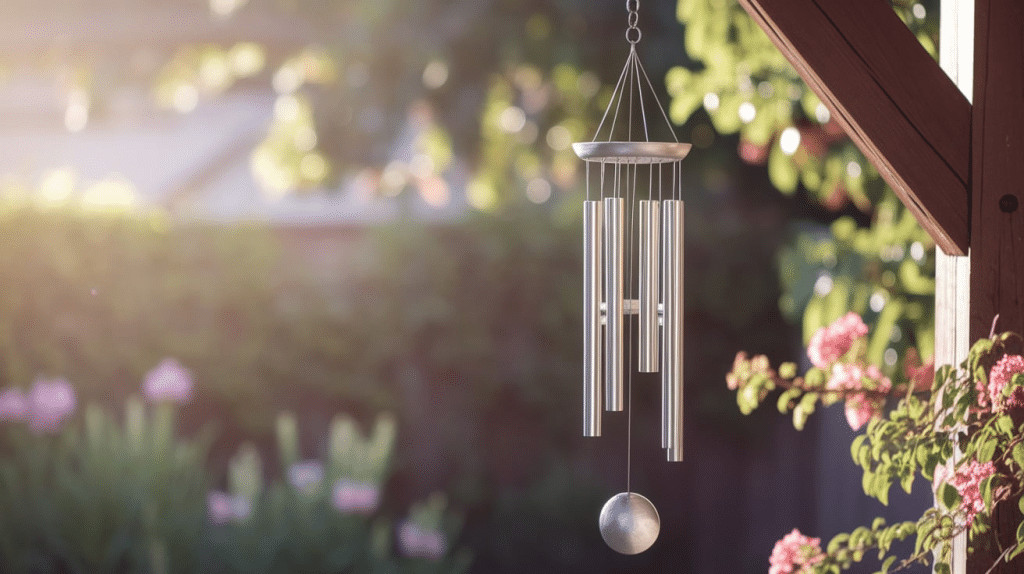Owning a pool transforms your backyard into a private paradise—but that paradise comes with a price tag. Pool maintenance costs typically range from $1,560 to $2,700 annually, covering all aspects of pool care, including chemicals and cleaning services.
Many new pool owners are shocked when they discover these ongoing expenses weren’t factored into their initial budget.
Understanding what drives these costs—and where you might save money—makes the difference between a refreshing summer retreat and a financial drain.
From basic water chemistry to equipment repairs, understanding what to expect helps you plan appropriately and avoid surprises that might detract from the enjoyment of your backyard oasis.
Understanding Pool Maintenance Costs
Having a pool at home brings joy, family fun, and a spot to cool off during hot summer days. But owning a pool also means setting aside money for upkeep.
Let’s break down what you need to know about pool care costs. Many first-time pool owners are surprised by the ongoing expenses, and without proper planning, these costs can quickly add up.
Knowing what to expect helps you enjoy your backyard oasis without financial stress, making pool ownership a pleasure rather than a burden.
1. What Does Pool Ownership Really Cost?
Swimming pools add value to your home and life, but they come with ongoing costs. Most homeowners spend between $1,200 and $1,800 yearly on basic pool upkeep. This amount can change based on:
- Pool size and type (in-ground or above-ground)
- Local weather and how long your swimming season lasts
- The equipment and systems you have
- How much work do you do yourself vs. hiring help
Effective planning helps avoid unexpected costs and keeps your pool in optimal condition year after year.
2. Key Pool Upkeep Expenses
Understanding the main costs helps you plan better. Here’s what most pool owners pay for:
| EXPENSE TYPE | TYPICAL YEARLY COST | WHAT IT INCLUDES |
|---|---|---|
| Water care | $300-$500 | Chemicals, testing kits, balancers |
| Cleaning | $300-$700 | Tools, filters, basic supplies |
| Energy | $300-$800 | Running pumps, heaters, and lights |
| Fixes & parts | $100-$300 | Small fixes and part swaps |
These numbers can fluctuate based on your pool’s specific needs and local costs.
3. Why Good Pool Care Matters
Maintaining pool care isn’t just about having clean water. Good care:
- Saves money long-term by stopping big problems before they start
- Keeps your pool safe for swimmers
- Makes your pool last many years longer
- Cuts down on wasted water, power, and chemicals
Addressing small issues promptly often prevents them from developing into costly problems that could hinder your enjoyment of the pool.
How Much Does Pool Maintenance Cost?
The bottom line for most homeowners is straightforward – expect to spend between $1,560 and $2,700 per year on basic pool maintenance.
This range reflects what typical pool owners pay for regular upkeep, chemicals, and routine services throughout the year.
New pool owners often underestimate these ongoing expenses; therefore, having a clear picture from the start is crucial.
Pool expenses vary by season:
- Swimming season (May-September): $200-$350 monthly
- Off-season (October-April): $80-$150 monthly
Many pool owners budget approximately $150-$225 per month, year-round, to avoid seasonal financial strain. The three major ongoing expenses are:
- Water chemistry (chemicals and testing)
- Cleaning supplies and services
- Electricity for equipment operation
Understanding these core cost categories helps identify potential savings opportunities without compromising water quality or equipment longevity.
Breakdown of Pool Maintenance Costs
Regular maintenance forms the foundation of pool care and represents the bulk of what you’ll spend each year. These predictable costs keep your pool clean, safe, and ready to use.
While the exact amounts vary based on your pool’s specific needs, these figures provide a reliable starting point for planning your pool budget.
Understanding what goes into these costs can help you make informed decisions about what to handle yourself and what to pay others to do.
Standard Costs for Pool Maintenance
Understanding the basic recurring expenses helps you plan your annual pool budget more effectively.
| SERVICE | ANNUAL COST | NOTES |
|---|---|---|
| Cleaning & water testing | $960-$1,800 | More frequent during swim season |
| Opening/closing | $150-$300 each | Once or twice yearly |
| Chemicals | $300-$800 | Depends on the pool size and use |
Professional cleaning services typically charge $80-$150 monthly during active swimming months, while DIY testing can be done with kits costing $50-$100 per season.
Costs by Type of Pool
In-ground pools generally cost more to maintain ($1,800-$2,700 yearly) than above-ground pools ($700-$1,500 yearly).
Saltwater vs. Chlorine Cost Comparison:
- Saltwater: Higher setup ($1,000-$2,500), lower yearly costs ($700-$1,200)
- Chlorine: Lower setup, higher yearly costs ($1,000-$2,000)
Over 5+ years, saltwater systems often become more economical despite the higher initial investment.
Factors Affecting Pool Maintenance Costs
Not all pools cost the same to maintain. Several key factors determine whether your costs will fall on the lower or higher end of the typical range.
Your pool’s physical characteristics, location, and how you choose to maintain it all play important roles in the final price tag.
Being aware of these factors helps you understand why costs vary and potentially identify areas where you might save money without sacrificing proper care for your investment.
Pool Size & Type
Size directly impacts maintenance costs:
- Small pools (under 10,000 gallons): $750-$1,200 yearly
- Medium pools (10,000-20,000 gallons): $1,200-$1,800 yearly
- Large pools (over 20,000 gallons): $1,800-$3,000+ yearly
Construction materials matter too. Concrete pools need more intensive cleaning and occasional resurfacing.
Vinyl liner pools require replacement every 5-9 years. Fiberglass pools typically have the lowest ongoing costs with simpler maintenance needs.
Local Factors
Where you live affects what you’ll pay:
Hot, sunny regions require more chemicals, as heat accelerates the breakdown process. Areas with lots of trees mean more cleaning. Windy locations collect more debris.
Regional cost examples vary significantly across different climate zones in the United States.
- Florida: $1,500-$2,500 (long season, humidity)
- Northeast: $1,200-$2,000 (shorter season, winterizing)
- Midwest: $1,300-$2,200 (varied climate challenges)
Understanding these regional differences helps explain why pool maintenance advice from friends or family in different parts of the country may not be applicable to your situation.
Unexpected & Hidden Costs in Pool Maintenance
Beyond the regular, predictable expenses of pool ownership lie several costs that often catch new pool owners by surprise.
These hidden costs can significantly impact your total pool budget if not accounted for from the beginning. Many homeowners focus solely on routine maintenance, overlooking these less frequent but sometimes substantial expenses.
Planning for these costs helps ensure your pool remains an enjoyable asset rather than a financial burden.
1. Insurance Impacts
Home insurance may increase by $50-$200 yearly due to added safety requirements. Many policies consider pools an “attractive nuisance” that increases liability risk for property owners.
Some insurers require specific safety features, such as fencing, pool covers, and alarms, to maintain coverage. Always inform your insurance company when installing a pool, as failing to do so could void your policy entirely.
2. Utility Expenses
These ongoing costs often surprise new pool owners, who often focus solely on maintenance services.
- Water for top-offs: $60-$300 yearly
- Electricity for pumps: $300-$600 annually
- Heating (if applicable): $400-$1,200+ yearly
These utility costs vary widely based on local rates, pool efficiency, and how you manage your pool systems.
3. Equipment Repairs
Pump replacements ($150-$800), filter issues ($60-$500), and liner replacements for vinyl pools ($1,500-$4,000) are common unexpected expenses.
Setting aside money for these inevitable repairs prevents budget surprises when equipment reaches the end of its useful life.
Smart pool owners set aside approximately 25% of their annual pool budget for these occasional but significant expenses.
DIY Pool Maintenance vs. Hiring a Professional
One of the biggest decisions affecting your pool maintenance costs is whether to do the work yourself or hire professionals.
This choice impacts not just your budget but also your time commitment and the quality of care your pool receives. Finding the right balance between DIY tasks and professional services often provides the best overall value.
Many pool owners start with full-service and gradually take on more tasks themselves as they become comfortable with the basics of pool care.
1. Money-Saving Potential of DIY
Taking on pool care yourself can save $ 500-$1,000 or more per year with a 2-4 hour weekly time investment.
Tasks most homeowners can handle:
- Skimming and basic cleaning
- Water testing and chemical adjustments
- Basic filter maintenance
Initial investment: $100-$300 for basic tools and test kits
2. When Professional Help Makes Sense
Some jobs are worth paying for, even if you handle routine maintenance yourself. These specialized tasks often require technical knowledge or equipment that most homeowners don’t have.
| SERVICE | TYPICAL COST | WHY IT’S WORTH IT |
|---|---|---|
| Opening/closing | $150-$300 each | Technical knowledge required |
| Equipment repairs | $60-$85/hour + parts | Specialized tools needed |
| Deep cleaning | $200-$400 | Prevents costly problems |
The expertise professionals bring to these tasks often prevents expensive mistakes and ensures your pool system operates correctly throughout the season.
The yearly cost comparison shows the financial impact of different maintenance approaches:
- Full professional service: $1,800-$3,000
- Hybrid approach: $1,000-$1,500
- Mostly DIY: $600-$1,000 (plus your time)
Finding the right balance for your situation depends on your comfort level with pool maintenance, the amount of available time, and your budget priorities.
Tips for Reducing Pool Maintenance Costs
With some strategic planning and smart habits, you can significantly reduce your expenses on pool care without compromising on water quality or equipment longevity.
Many pool owners pay more than necessary simply because they’re unaware of these cost-saving approaches.
Implementing even a few of these strategies can lead to substantial savings over the life of your pool while still maintaining a clean, safe swimming environment for your family and guests.
Simple Strategies
Saving money on pool upkeep doesn’t require advanced knowledge or expensive equipment. These practical approaches can significantly reduce costs while maintaining excellent water quality and equipment longevity.
1. Use Pool Covers Consistently: A basic solar cover ($75-$150) can reduce:
- Chemical use by 35-60%
- Heating costs by 50-70%
- Cleaning time significantly
This simple tool typically pays for itself within the first season through savings in chemicals and energy alone.
2. Optimize Equipment Operation: Run pumps during off-peak hours when electricity rates are lower. Most pools need only 8-10 hours of filtration daily during peak season, not 24/7 operation.
3. Practice Preventive Maintenance: Regularly cleaning filters keeps systems running efficiently. Addressing small water chemistry issues prevents bigger problems that require expensive treatments.
Long-term Savings
Consider these investments that pay off over time:
Energy-efficient equipment, such as variable-speed pumps ($800-$1,200), can save $300-$500 per year in electricity by adjusting power use to match your pool’s needs.
Annual professional inspections ($100-$200) often catch small issues before they become expensive repairs. This preventive approach typically saves money despite the upfront cost.
With thoughtful planning and consistent care, you can enjoy your pool while keeping maintenance costs under control.
The Bottom Line
Proper pool maintenance isn’t just about keeping water clear—it’s about protecting your investment while controlling costs.
By balancing DIY tasks with professional help, using energy-efficient equipment, and practicing preventive care, you can significantly reduce yearly expenses without compromising water quality or equipment longevity. Remember that consistent attention prevents most costly problems before they develop.
A well-maintained pool provides years of enjoyment, health benefits, and increased property value that far outweigh the maintenance costs.
With the right approach, your backyard swimming spot becomes a source of joy rather than stress—the perfect balance of reasonable investment and priceless summer memories.
If you’re interested in learning more about maintaining a pool, click here for additional information.

